While defense budgets are uncertain, technology has a direct impact on force effectiveness which will lead to an emphasis on enhancing capabilities across radar, EW, communications and other military systems. As a result, more of the defense budget will go into electronics. While no single technology will be the panacea for all requirements, architectural changes in military electronics will require broadband performance, higher operating frequencies and digitization over the next decade.
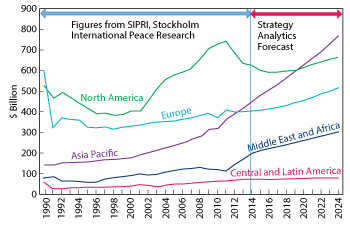
Figure 1 Global defense spending, historical and projected.
Defense spending was essentially flat year-on-year from 2012 to 2013, with a sharp increase in 2014 triggered by the changing geopolitical threat environment (both state and non-state activity). Strategy Analytics predicts that global defense spending will increase 2 percentyear-on-year in 2015 and will grow at a compound annual growth rate (CAGR) of almost 3 percent to reach $2.4 trillion in 2024. Excluding spending related to personnel, operations and administration, support, training and infrastructure, we expect the available market for procurement and support of platforms, systems and the associated spending on subsystems and enabling technologies will reach $767 million in 2024 (see Figure 1).
The key driver for this increase will continue to be the emphasis on gaining differentiation through technology, irrespective of whether armed forces are dealing with symmetric, asymmetric or hybrid conflicts. This has been demonstrated throughout history, by military technologies that have enabled capabilities such as stand-off, force projection, stealth and intelligence. Gaining advantage through technology remains true today, although increased spending must also be cost effective in light of the tightening budgetary environment. Strategy Analytics forecasts spending on defense systems will approach $140 billion by 2023 (see Figure 2), which translates into a substantial opportunity for component technologies supporting radar, communications, EW and other military applications.
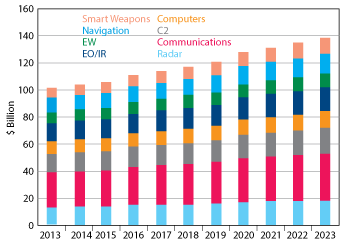
Figure 2 Forecast for global defense system spending by system type.
Military radar spending will increase with the continued implementation of active electronically scanned array (AESA) technology, which is enabling systems that can support multifunctional operations. Using solid-state technologies such as GaAs and GaN, AESAs can be scaled across a range of domains and platforms.
Trends in military communications include higher operating frequencies, multi-band and multi-mode operation and IP, data-centric operations with the flexibility to create ad hoc networks in the field. Similar to developments in the commercial sector, these trends are driving the need for high power, linearity and efficiency.
Electronic warfare (EW) systems are also evolving to enable control of an increasingly complex spectrum environment. The argument for stealth in lieu of EW is no longer viewed as viable, which will renew investment in EW systems over the next decade. Systems will adopt AESA architectures and technologies that support wider band, higher power, greater sensitivity and selectivity and digital control.
RADAR
Strategy Analytics forecasts that the global military radar market will grow at a CAGR of 3.6 percent from 2013 until 2023, reaching over $18.5 billion in 2023 (see Figure 3). This forecast encompasses system shipments for land, air, sea and space and reflects the following assumptions and estimates:
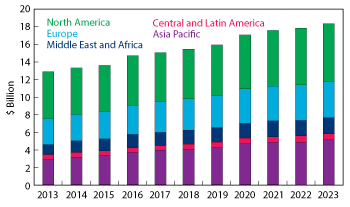
Figure 3 Military radar forecast by region.
- North America will continue to be the largest regional market; however, the fastest growth will be in the Asia-Pacific region.
- Airborne radar will be the largest segment, both in dollars and shipments.
- Early warning, surveillance and fire control radars will account for around 76 percent of the systems.
- L-, S- and C-Band will represent the largest market, used for surveillance and early warning radar, followed by X-Band, used for fire control.
- The associated market for semiconductors and other components will grow from $1.2 billion to $2.1 billion.
- GaN will become an established technology, as it grows at a 26 percent CAGR and is used across all radar systems.
Total radar shipments are forecast to grow at a 4.1 percent CAGR through 2023, reaching 1393 systems. Fire control radar will continue to dominate the traditional mix, yet the fastest growth will be from emerging platforms such as unmanned systems as well as new radar system types.
COMMUNICATIONS
The forecast for the communications sector includes radios, communications satellites, VSAT terminals, datalinks, networks and other systems. Network-centric IP-based communication is primarily driving increased spending, which is forecast to be $35.3 billion in 2024 (see Figure 4). This represents a CAGR of 3.4 percent. The forecast reflects the following assumptions and estimates:
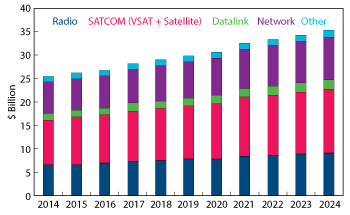
Figure 4 Military communications forecast by system.
- North America, historically the largest regional market, will be superseded by demand from the Asia-Pacific region beginning in 2016.
- Land-based communication will represent the largest market, both in dollars and total shipments.
- Spending in the military communications sector will be dominated by satellite communications systems (comprising the satellites as well as their ground-based terminals), with a steady launch schedule for military communications satellites over the forecast period.
- The increasing emphasis on IP-centric communications for data and voice will coincide with systems that operate across multiple modes and bands.
- System trends and requirements will require technologies that support broadband performance, higher frequencies and digitization.
These system trends will ensure continued spending on military radios. Strategy Analytics forecasts the market for radios will exceed $9 billion by 2024 (see Figure 5). The forecast assumes:
- The Asia-Pacific region will drive spending on tactical radios for land-based communications, the largest region over the entire forecast period.
- Land-based radios will be the largest market, both in dollars and shipments.
- Radio shipments will grow at a CAGR of 3.5 percent through 2024 to reach 172,867 units.
- While the traditional HF, VHF and UHF frequencies will continue to be used, the emphasis will shift to systems that support multi-band and/or wideband operation – with these systems accounting for 47 percent of the military radio market in 2024.
- Handheld radios will drive volume in the land-based military market, which will grow to $6.5 billion.
- Radios for smaller platforms such as fast attack craft, offshore patrol vehicles, helicopter and light aircraft will drive the volume in the shipborne and airborne segments.
- The associated market for component technologies will grow from $710 million to almost $1.1 billion.
- As with radar systems, GaN will become an established technology, growing at a CAGR of 33 percent.
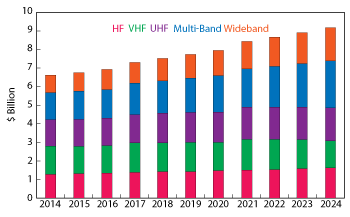
Figure 5 Military radio market forecast.
The continuing demand for satellite communications will see increased spending on military satellite terminals, approaching $6 billion in 2024 (see Figure 6). In forecasting this growth, Strategy Analytics assumes:
- North America will have the largest demand at the beginning of the forecast period, however the Asia-Pacific region will lead from 2017.
- Demand from the other regions will also grow, with spending in the Middle East and Africa forecast to grow at a 4.3 percent CAGR.
- Land-based terminals will represent the largest market in dollars, accounting for 49 percent of the total market, and will also represent the bulk of shipment volume.
- Terminal shipments will reach over 8000 units, a CAGR of 3.8 percent through 2024, with portable and dismounted terminals driving the volume in the land sector and unmanned aircraft systems (UAS) in the airborne sector.
As well as the trend to higher frequencies (e.g., Ka-Band terminals), systems that can support multiple bands and/or wideband operation will affect component technology choice and demand.
ELECTRONIC WARFARE
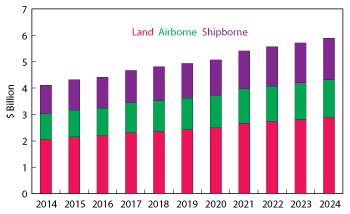
Figure 6 Military satellite terminal forecast.
The flip side of the unprecedented capabilities offered by next-generation radar and communications systems is the challenge to the EW community. The increasingly congested and complex spectrum environment will require that EW systems operate across wider bandwidths to protect critical assets. The strategy will shift back towards reestablishing airborne EW capabilities to counter anti-access, area-denial systems. The renewed focus on electronic attack (EA) capabilities will provide opportunities for conventional platforms dedicated to EW, such as Boeing’s EA-18G and other fast jet and aircraft platforms. The Next Generation Jammer (NGJ) will be supplemented by the capabilities that fifth generation platforms such as the F-35 will bring as well as air-launched, podded and towed systems. The Surface Electronic Warfare Improvement Program (SEWIP) will upgrade the capability of shipborne EW. Digital flexibility will be a common theme across land, air and shipborne platforms, which will demand digital RF memory (DRFM) jammers. This, in turn, will impose requirements for higher performing field-programmable gate arrays (FPGA), analog-to-digital converters and more capable RF front-ends.
Given this need for enhanced performance, Strategy Analytics expects EW spending will grow to over $18 billion in 2024, a CAGR of 3.3 percent from 2014 through 2024.
GaN ADOPTION
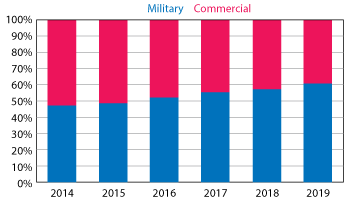
Figure 7 GaN market growth will be driven by military applications.
While no one technology can meet all requirements, architectural changes that require broadband performance, higher operating frequencies and digitization will increase the funding for military electronics, including solid-state technologies such as GaN. Defense is the best market for GaN to “attack” and prove its maturity, with opportunities across all sectors.
Initial defense needs for GaN have been for EW systems for electronic countermeasures (ECM), specifically land-based RF jammers designed to counter improvised explosive devices (C-IED). Although troop withdrawals from theatres such as Iraq and Afghanistan have reduced volume over the past two years, demand will return from airborne and shipborne platforms. In addition to the U.S. systems previously noted, international programs such as Saab’s wingtip jammer for the Gripen E will utilize GaN.
Radar systems will also utilize GaN to achieve higher power across a wide range of operating frequencies. GaN will compete with both TWT and GaAs power amplifiers for land and shipborne radar, spreading to airborne and space-based radars. Raytheon has demonstrated the increasing maturity of the technology, inserting it in the Patriot air and missile defense system and the U.S. Navy’s next-generation integrated air and ballistic missile defense radar, named the Air and Missile Defense Radar (AMDR). In parallel, European activity includes Saab’s Giraffe 4A land radar.

Military communications will also adopt GaN, providing a third avenue of growth for the technology. Collectively, the demand from EW, radar and communications will spur the military GaN RF market to grow at a CAGR of 28 percent, compared to 15 percent for the commercial sector and 20 percent overall. The total market is estimated to be greater than $500 million in 2019, of which military applications will represent 60 percent of the total (see Figure 7). GaN will still be in a relatively early stage of deployment in 2019, so the potential for growth will extend over many years.
While defense budgets are uncertain, technology has a direct impact on force effectiveness and will lead to enhancing capabilities in radar, EW, communications and other military systems. More of the defense budget will go into electronics. While no single technology will serve all the requirements, the architectural changes demanding broadband performance, higher frequencies and digitization will provide opportunities for RF/microwave sensors and technologies such as GaN.
